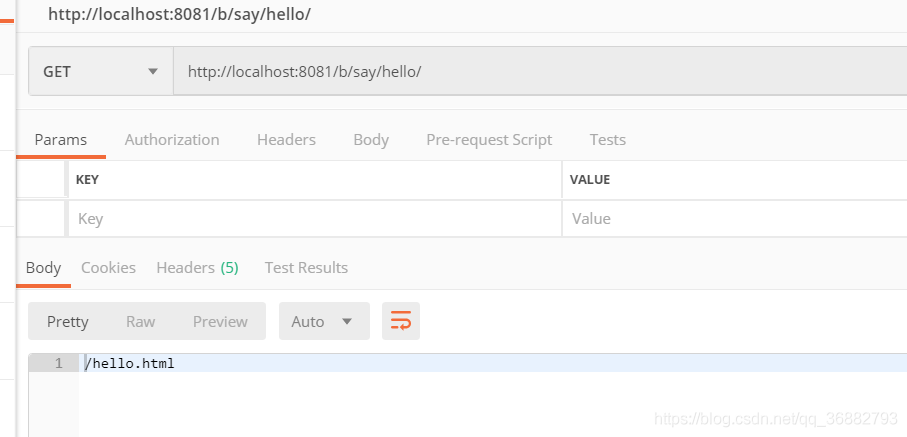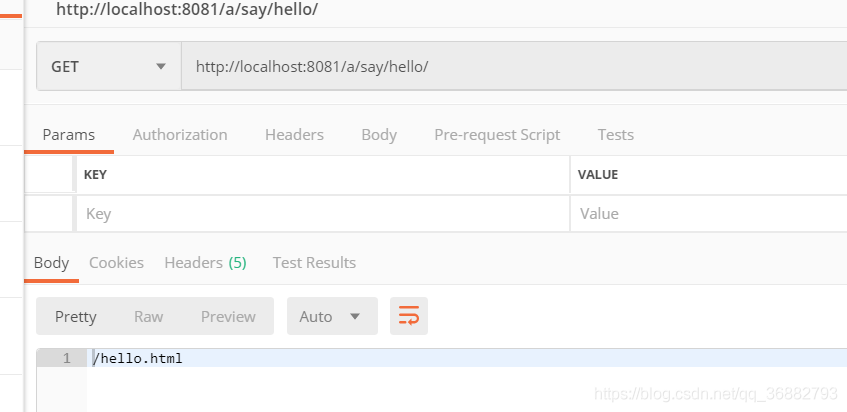您好,登錄后才能下訂單哦!
您好,登錄后才能下訂單哦!
這期內容當中小編將會給大家帶來有關Java中@RequestMapping注解有什么用,文章內容豐富且以專業的角度為大家分析和敘述,閱讀完這篇文章希望大家可以有所收獲。
問題闡述:在某一場景下,我們的代碼在 Service 實現相同,但卻在 Controller 層訪問時卻希望不同的前綴可以訪問。如下 :/say/hello。我們這里希望在不借助任何外部服務的情況下 通過 /a/say/hello 和 /b/say/hello 都可以訪問到該接口,同時不想在 Controller 中寫兩個方法。
@RestController
@RequestMapping("say")
public class SayController {
@Autowired
private SayService sayService;
@RequestMapping("hello")
public String hello() {
return sayService.hello();
}
}我們這里簡單說明一下思路:
1.在 Spring 服務啟動后, HandlerMapping 的實現類 RequestMappingHandlerMapping 會獲取到被 @RequestMapping等請求注解修飾的方法,并封裝成一個個 HandlerMethod 保存到 RequestMappingHandlerMapping#MappingRegistry 中(HandlerMapping 具有多個實現類,每個實現類具有不同規則)。
2.當 DispatcherServlet 接收到請求后會根據 url 獲取 合適的 HandlerMapping 組成 HandlerExecutionChain(處理器執行鏈),隨后通過 HandlerAdapter 來進行請求處理。而這里通過 HandlerMapping 會根據請求 URL 獲取到匹配的 HandlerMethod 進行方法調用。
因此我們這里有了兩種思路 :
1.在 Spring 加載 HandlerMethod 時設置當前 HandlerMethod 的匹配規則為 /a/say/hello/、/b/say/hello/,當 /a/say/hello/、/b/say/hello/ 請求訪問時可以與之匹配。
2.在請求處理的時候,通過攔截器將 /a/say/hello/、/b/say/hello/ 的訪問路徑匹配到 /say/hello 方法上。
本文選擇第一種思路(不過話說怎么想都是第一種好吧)做一個簡單demo示例,其實現如下:
// 自定義分發注解
@Target({ElementType.TYPE, ElementType.METHOD})
@Retention(RetentionPolicy.RUNTIME)
@Documented
public @interface RequestRouter {
String[] value() default "";
}package com.kingfish.springjdbcdemo.config;
import lombok.SneakyThrows;
import org.springframework.stereotype.Component;
import org.springframework.web.method.HandlerMethod;
import org.springframework.web.servlet.mvc.condition.PatternsRequestCondition;
import org.springframework.web.servlet.mvc.method.RequestMappingInfo;
import org.springframework.web.servlet.mvc.method.annotation.RequestMappingHandlerMapping;
import javax.servlet.http.HttpServletRequest;
import java.lang.reflect.Field;
import java.lang.reflect.Method;
import java.util.Arrays;
import java.util.Set;
import java.util.stream.Collectors;
/**
* @Author : kingfish
* @Email : kingfishx@163.com
* @Data : 2021/4/21 16:47
* @Desc : 路由 HandlerMapping 的實現
*/
@Component("handlerMapping")
public class RouterRequestMappingHandlerMapping extends RequestMappingHandlerMapping {
// 在將 方法封裝成 HandlerMethod 時會調用此方法
@SneakyThrows
@Override
protected RequestMappingInfo getMappingForMethod(Method method, Class<?> handlerType) {
// 獲取 RequestRouter 注解
RequestRouter requestRouter = method.getAnnotation(RequestRouter.class);
if (requestRouter == null) {
requestRouter = handlerType.getAnnotation(RequestRouter.class);
if (requestRouter == null) {
for (Class<?> handlerTypeInterface : handlerType.getInterfaces()) {
if ((requestRouter = handlerTypeInterface.getAnnotation(RequestRouter.class)) != null) {
break;
}
}
}
}
// 調用父類,生成 RequestMappingInfo
RequestMappingInfo mappingForMethod = super.getMappingForMethod(method, handlerType);
if (requestRouter != null) {
// 如果 requestRouter 不為空,則進行路徑處理
String[] requestRouterValue = requestRouter.value();
PatternsRequestCondition condition = mappingForMethod.getPatternsCondition();
// 獲取當前方法匹配的路徑,隨即進行添加處理。
Set<String> patterns = condition.getPatterns();
Set<String> routerPatterns = patterns.stream()
// 拼接 請求路徑。這里可以自定義處理策略
.flatMap(pattern -> Arrays.stream(requestRouterValue).map(val -> "/" + val + pattern))
.collect(Collectors.toSet());
// 將拼接后的路徑添加到 RequestMappingInfo 中
patterns.addAll(routerPatterns);
}
return mappingForMethod;
}
}@Configuration
public class SpringConfig {
@Bean
public DispatcherServlet dispatcherServlet(){
DispatcherServlet dispatcherServlet = new DispatcherServlet();
// 禁止加載所有的handlerMapper,而只加載beanName 為 handlerMapper 的bean
dispatcherServlet.setDetectAllHandlerMappings(false);
return dispatcherServlet;
}
}這里需要注意 :
1.HandlerMapping 在 Spring中有多個實現,而 dispatcherServlet.setDetectAllHandlerMappings(false); 參數設置Spring 放棄加載多個 HandlerMapping,而只加載 beanName為 handlerMapping 的
2.HandlerMapping。RequestMappingInfo 包含 當前方法的諸多信息,其中就包含 什么樣請求路徑可以匹配到該方法,所以我們在這里獲取到 RequestRouter 的信息,并添加到匹配路徑上。
在 方法上加上 @RequestRouter(value = {"a", "b"}) 注解
@RestController
@RequestMapping("say")
public class SayController {
@Autowired
private SayService sayService;
@RequestRouter(value = {"a", "b"})
@RequestMapping("hello")
public String hello() {
return sayService.hello();
}
}/a/say/hello/、/b/say/hello/ 以及 /say/hello/ 都可以訪問


Java是一門面向對象編程語言,可以編寫桌面應用程序、Web應用程序、分布式系統和嵌入式系統應用程序。
上述就是小編為大家分享的Java中@RequestMapping注解有什么用了,如果剛好有類似的疑惑,不妨參照上述分析進行理解。如果想知道更多相關知識,歡迎關注億速云行業資訊頻道。
免責聲明:本站發布的內容(圖片、視頻和文字)以原創、轉載和分享為主,文章觀點不代表本網站立場,如果涉及侵權請聯系站長郵箱:is@yisu.com進行舉報,并提供相關證據,一經查實,將立刻刪除涉嫌侵權內容。